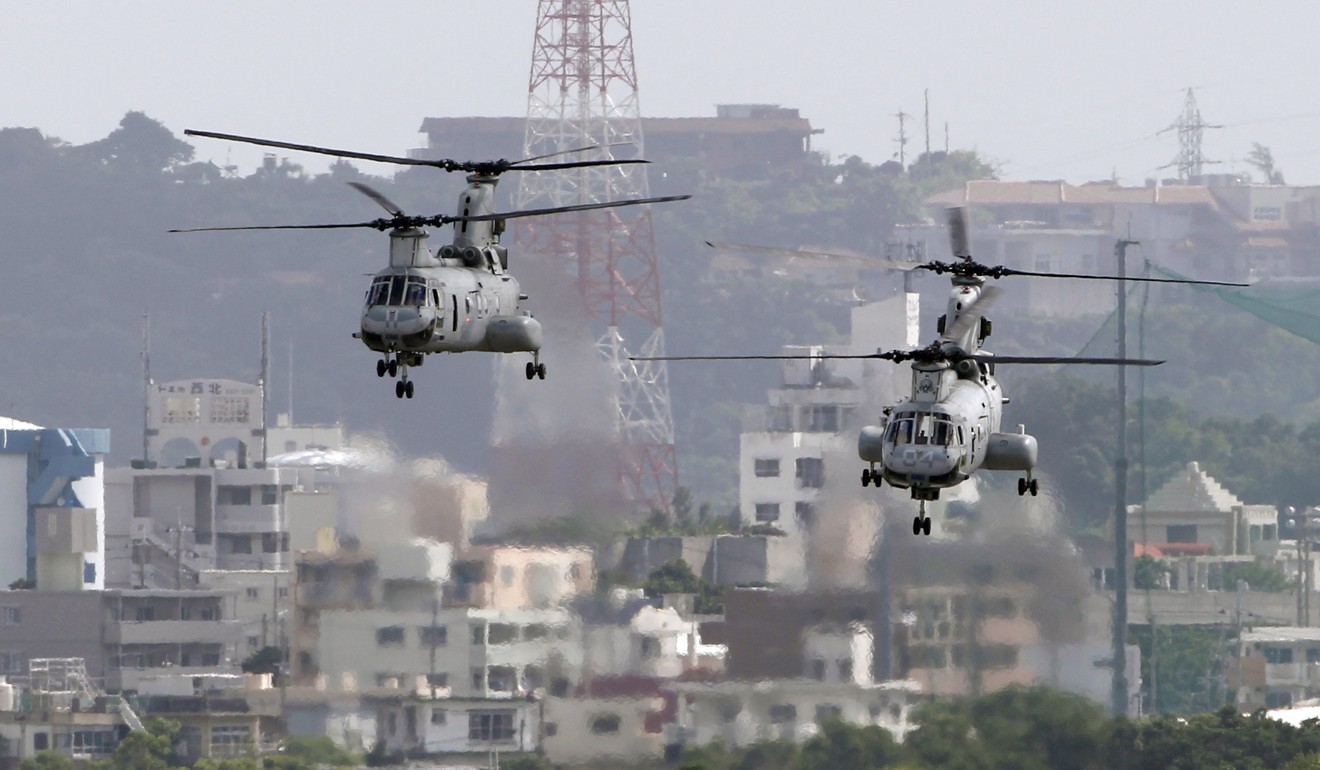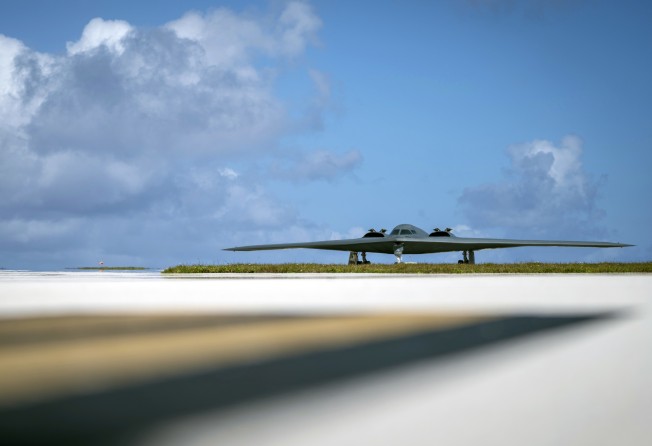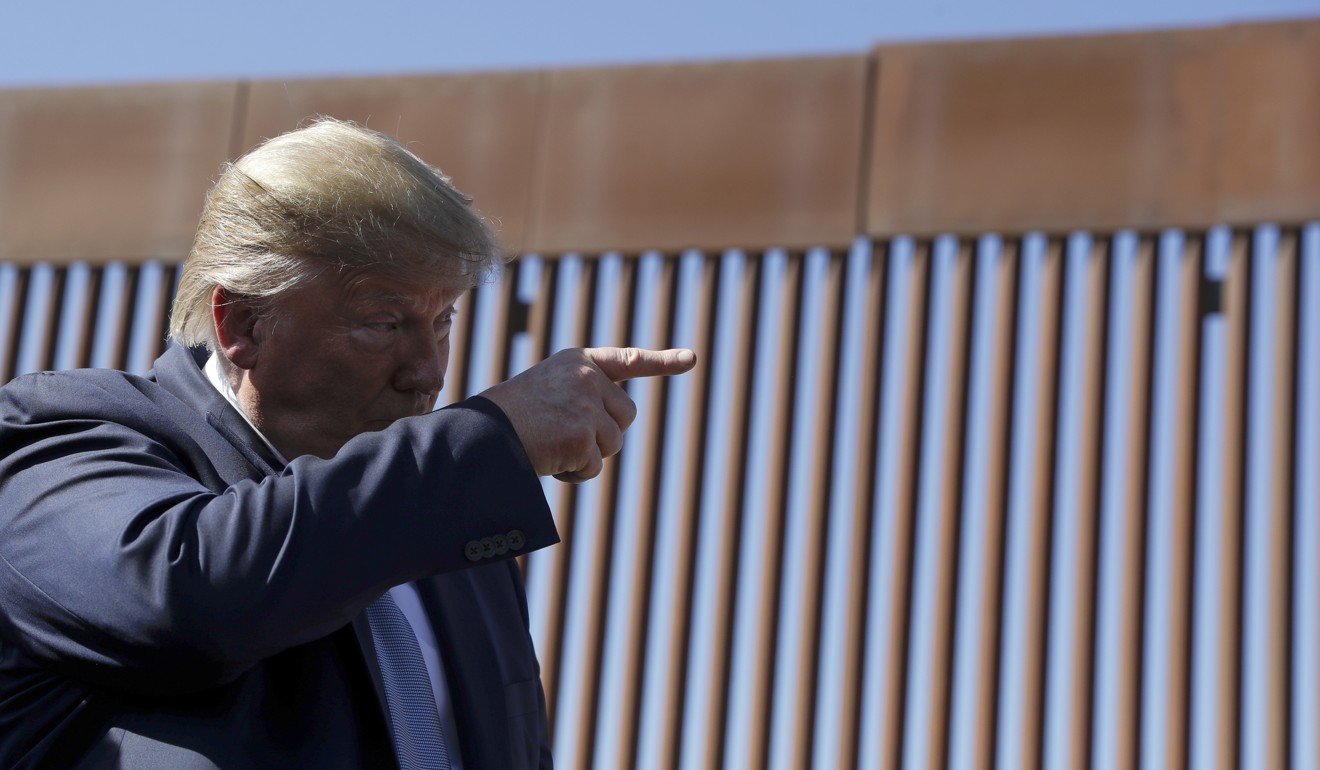
How Donald Trump’s border wall money raid impacts US bases in Pacific that watch China
- About 7 per cent of the funds for the US$3.6 billion wall are being diverted from eight projects in Guam, an island critical to the US military’s efforts to counter China’s growing military

US President Donald Trump is raising a large chunk of the money for his border wall with Mexico by deferring several military construction projects slated for Guam, a strategic hub for US forces in the Pacific.
This may disrupt plans to move Marines to Guam from Japan and to modernise munitions storage for the US Air Force.
About 7 per cent of the funds for the US$3.6 billion wall are being diverted from eight projects in the US territory, a key spot in the US military’s efforts to deter North Korea and counter China’s growing military.
The administration has vowed it’s only delaying the spending, not cancelling it.
But Democrats in Congress, outraged over Trump’s use of an emergency order for the wall, have promised they won’t approve money to revive the projects.
“The fact is, by literally taking that money after it had been put in place and using it for something else, you now put those projects in jeopardy,” said Carl Baker, executive director of Pacific Forum, a Honolulu-based foreign policy think tank.

The Senate on Wednesday passed a measure blocking Trump from raiding the military construction budget for the wall.
The Democratic-controlled House passed the bill on Friday, but Trump was expected to veto it as he did with an identical measure in March.
The tiny island of Guam holds a naval base with fast attack submarines and a US Air Force base with bombers that rotate in from the mainland.
The US currently plans to start moving 5,000 Marines there from Okinawa in southern Japan around 2025. This is part of a decades-long effort by Tokyo and Washington to relieve the congested Japanese island’s burden of hosting half the US forces stationed in Japan. The total cost of relocating the Marines is US$8.7 billion, of which Japan is paying US$3.1 billion.
The projects put on hold by the border wall are a small share of this total, yet critical to the relocation.
There’s US$56 million to build a well system that will supply most of the water to be used by a new Marine base. The area’s existing water supply is inadequate to meet the needs of the transferred troops.
There’s also a US$50 million live-fire training range and a US$52 million munitions storage facility. Documents about the projects the military provided to Congress say the Marines won’t leave Okinawa until replacement facilities in Guam are ready.
The documents say failure to complete these two projects could delay or prevent the Marines from moving.

Guam activists opposed to the live-fire range said the delay will give them time to study ancient settlements found in the area. They said it would be irresponsible to move forward on projects that would destroy cultural sites and cause irreversible environmental damage when there’s so much uncertainty about the relocation.
The US reassured Japan immediately after the announcement that it would stick to the existing timeline.
“We have received explanation from the US side about the shifting of the budget that it will not affect the planned movement of Marines on Okinawa to Guam, and that the US government commitment to the realignment plan is unchanged,” then-Defence Minister Takeshi Iwaya told reporters earlier this month.
Discussions to reduce the US presence on Okinawa began in the mid-1990s after the rape of a 12-year-old Okinawan girl by three US servicemen sparked mass demonstrations. The allies in 2006 said they would send Marines to Guam by 2014, a deadline that slipped as they revised plans.
Although Okinawa makes up less than 1 per cent of Japan’s land space, it hosts about half of the 54,000 American troops stationed in Japan and is home to 64 per cent of the land used by the US bases in the country under a bilateral security treaty.
“The fact is, the longer that the projects on Guam are delayed, that means the longer that there’s not going to be any forward movement on some aspects of moving the Marines off Okinawa,” said Jeffrey Hornung, a researcher at the RAND Corporation.
“And this all comes from taking money to build a border wall.”
Diverted spending also will affect the US Air Force, including US$45.1 million for two projects to update 70-year-old munitions storage.
The US Air Force has been rotating bombers – the B-2 stealth bomber as well as the B-1 and B-52 – through Guam since in 2004 to compensate for US forces sent from the Asia-Pacific region to fight in the Middle East. In 2017, the US dispatched a B-1 bomber from Guam to the Korean peninsula as a show of force after North Korea accelerated its efforts to test intercontinental ballistic missiles and expand its nuclear weapons programme.